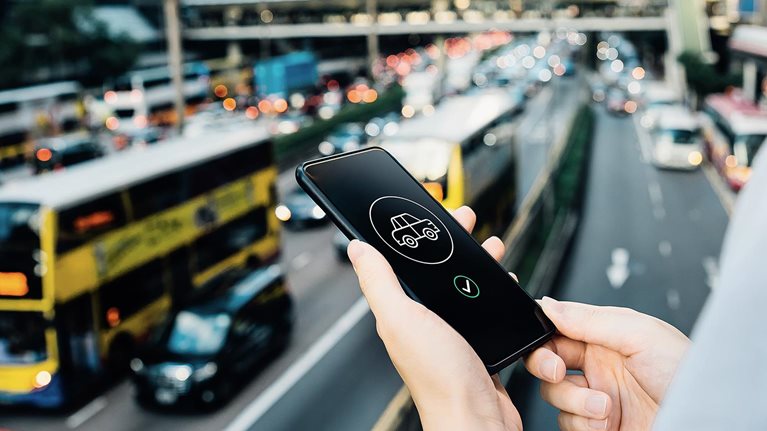In March 2020, transit ridership plummeted across the world—for example, ridership in the United States fell to less than 10 percent of prepandemic levels in many systems. As more countries approach the functional end of the pandemic, some riders who had been working from home will begin to return, and many will likely test new hybrid working models over the coming months.1 Therefore, the rest of the year could be a critical time for transit agencies to bring back former riders and add new riders to the system. But customer needs and expectations have changed—and there’s no guarantee riders will come back without bold moves by agencies.
Transit agencies can consider carrying out a high-intensity campaign over four to six weeks to help bring riders back in significant numbers and ensure they have a positive experience. It’s a pivotal moment, and transit agencies have an opportunity to establish their mode of transportation as the top choice in their service territories.
The campaign
A campaign to bring back riders and meet their changing needs and expectations could include eight actions, from thoughtful marketing efforts to novel approaches to payment and service offerings.
Targeted marketing efforts
Many former riders are out of the habit of using transit and have grown accustomed to making trips via other modes. Inspiring them to reintegrate transit into their work commutes and leisure transport may require a marketing campaign.
Transit agencies can segment their ridership base using email addresses of monthly or weekly pass holders (who account for about half of former riders), survey data, and third-party ridership data. But to get a deep understanding of riders, agencies may have to go beyond the typical ridership survey—for example, by using analytics to understand important buying factors for different ridership segments. Agencies can then augment these analytics with specific ethnographic research to understand the most important elements of how people use transit and the desired experience across that group’s set of transportation options.
From there, agencies can conduct microtargeted campaigns, promoting innovations to each of these segments. These marketing campaigns can be based on an understanding of the root causes of transit hesitancy, such as concerns about health, personal safety, and crowds. And user research could explore the mindsets, concerns, and behaviors of past and current riders, allowing agencies to test a variety of incentives to see how well they alleviate concerns and influence behavior.
Large-employer engagement
Transit agencies can reach out to major employers in their area to learn about their reopening plans and brainstorm ways to encourage employees to come back to the office using transit. For example, agencies can work with employers to provide potential riders with information onsite about transit options, special fare subsidies, and employer-funded fare passes. They may also increase service on certain routes or propose that employers stagger workday start times to minimize crowding. By working together, transit agencies and employers can help facilitate a return to the office and ease the implementation of hybrid work models.
Would you like to learn more about our Operations Practice?
Promotional payment schemes
Payment models that were popular before the pandemic, such as monthly or weekly passes, are unlikely to attract workers who have shifted to hybrid work schedules or riders who are hesitant about taking transit and unsure of their future usage patterns. Several actions could help get people back onto the system:
- Going fare-free: Agencies could eliminate fares for an initial period, such as a few weeks following the end of the summer holidays, to encourage riders to make transit part of their new routine. The Los Angeles County Metropolitan Transportation system, for instance, offers free rides on Christmas Eve and around the new year to encourage transit usage.2
- Providing deep discounts during off-peak hours: This move can help alleviate crowding by encouraging riders to travel at different times. In Australia, Transport for NSW, for example, offered 50 percent off rides outside peak times during the summer of 2020.3
- Offering flexible pass and pricing arrangements or fare capping: Agencies could replace monthly or weekly unlimited passes with more flexible arrangements, or institute fare capping. For example, the New Jersey Transit Corporation supplemented its existing monthly pass by creating FLEXPASS, an option to buy 20 one-way tickets between one origin and one destination; these tickets are offered at a 20 percent discount and are valid for 30 days.4
- Instituting loyalty programs: Such programs reward and provide incentives for ridership by offering riders discounts on, for example, food, drinks, museums, and other entertainment. Philadelphia’s SEPTA Perks provides riders with rewards they can redeem at local institutions.5
More—and faster—service
As they work toward providing the fastest, most competitive service, transit agencies can ask themselves a series of operational questions: Could peak service be increased by 10 to 25 percent to help alleviate potential crowding during the morning and evening rush? Could peak-level service—or close to it—run most of the day to accommodate the more flexible schedules that riders may now have? Could agencies work with local departments of transportation to establish pop-up interventions (for example, use paint to create bus bulbs or exclusive lanes) to make transit competitive with personal-vehicle travel? Could new service routes or interagency collaborations help bring in new riders in addition to attracting lapsed riders?
Easing first- and last-mile issues
Improving first- and last-mile issues will be critical in winning back riders, particularly for commuter rail systems, which have suffered some of the largest and most enduring ridership declines. Agencies can consider easing intermodal transfers (for example, by providing pulse scheduling, free transfers, or fare credits) or forming promotional partnerships with private partners, such as rideshare or micromobility companies, to mitigate this issue and create an incentive for riders to return to transit.
For example, in 2020, Via worked with Jersey City, New Jersey, to create an on-demand public bus service. The service directed people to “virtual bus stops” and charged a flat fee to get to and from the city’s central zone, where most of its transit stations are.
Tokyo also offers an example of such integration: faced with many transport operators in the city, Tokyo Metro launched a mobility-as-a-service initiative with a mobile app to integrate multiple transportation modes while linking to various destination services. Indeed, scaling in the new transportation economy requires transit systems to focus on increasing the value of the ecosystem—not just on their own role in it.

The project of the future: The best ideas from the 2021 GII Summit
Highly visible health and safety measures
Users may also have new expectations about what constitutes acceptable levels of sanitation and air quality. Transit agencies can address potential concerns through high-visibility cleaning and by showcasing efforts to increase air-filtration frequency in enclosed spaces. For example, Moscow Metro implemented a series of highly visible initiatives to ensure passengers were aware of safety protocols, including daily disinfection of trains and stations. Agencies will likely also want to review their enforcement of health and safety measures adopted during the pandemic, such as universal mask wearing. While some customers may want these policies to continue, others may be eager for them to end. Navigating competing preferences will require a deep understanding of customer needs and finesse in communicating the reasoning behind the decisions the agency makes.
New rider-focused apps
Real-time monitoring apps can detect the level of crowding in stations, thereby helping people enter the system at less congested points and maintain distance from other riders. Moscow Metro is using a smart monitoring system to track passenger flow in real time, which helps enable greater physical distancing among passengers. As the vehicle arrives at the station, real-time apps can also help direct passengers to the least crowded parts of the vehicle and help passengers plan their trips around crowd levels they are comfortable with. Riders on the Long Island Rail Road in New York, for instance, can use the TrainTime app to see real-time crowding levels in each railcar.
Station ambassadors
Agencies could employ more transit workers in ambassador-type roles, positioning them prominently throughout stations to answer questions as riders regain familiarity with the system. These ambassadors can also provide “eyes on the platform” to create a sense of safety and security. Singapore MRT, for example, employs transit ambassadors to direct passenger boarding and alighting, helping smooth vehicle entry and exit and providing a sense of safety.
Getting started
To get started on a strategy to become the mode of choice, transit agencies can answer a series of questions:
Marketing
- Who should be targeted for returning to the system, how can they be reached, and what messages will be most effective?
Operations
- Who are potential partners in the campaign (for example, major employers and private transportation providers), and how should they be engaged?
- How can the agency increase operational agility (for example, reduce absenteeism or harness advanced analytics to staff the right number of extra-board employees) to ensure the workforce is able to execute such a campaign?
Funding
- Where might funding for additional service or personnel hours come from? Can any existing sources of funding be repurposed for these efforts?
- What are the economics behind critical funding decisions (such as going fare-free or running extra service)? How can management evaluate these decisions?
Maintaining momentum
- How can the agency take a “test, learn, and scale” approach to quickly expand the interventions that are working?
- After the campaign, what interventions should be maintained?
Once they’ve answered these questions, agencies can conduct scenario planning to test the impact of the campaign. By hosting discussions about the elements of the campaign with all major stakeholders—including riders, local police departments, other transit agencies in the area, major employers, local department of transportation officials, local city officials, and major real estate developers—transit agencies can gather relevant input and optimize the campaign accordingly.
Transit agencies have a unique opportunity to proactively shape the role of transit in the next normal, keeping riders at the core of their efforts. If executed well, ridership campaigns could put transit agencies in an even better position to fulfill their missions of ensuring safe, reliable, affordable, equitable, and sustainable transportation across their service territories.
For more on reimagining transit in a post-COVID-19 world, see the roundtable discussion that was part of 2021 GII Summit: Project of the future.


